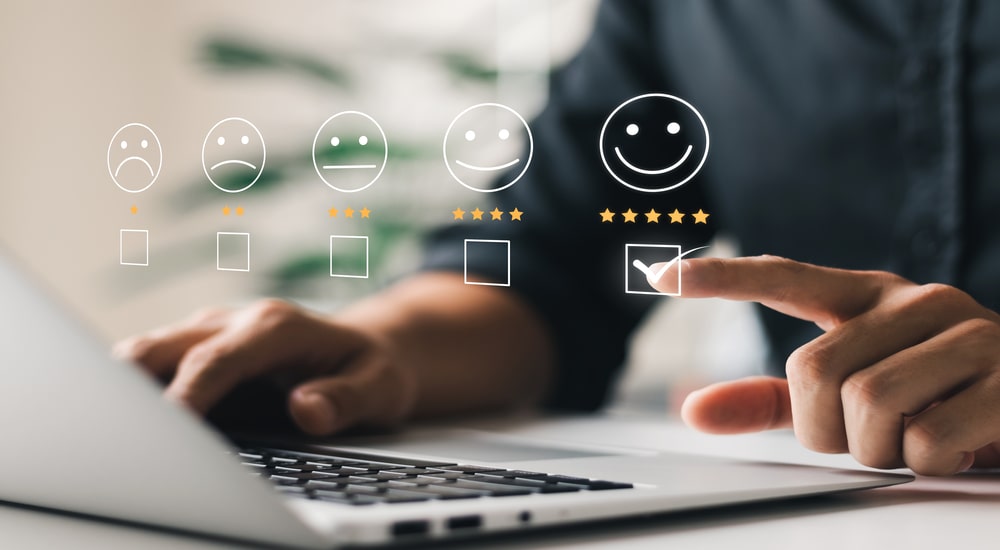Artificial intelligence
Technologies are advancing day by day and being utilized in various aspects of our lives. Among these technologies, ChatGPT stands out as a highly successful option for chatbot integration. ChatGPT offers a remarkable experience with artificial intelligence, providing users with an effective means of communication.
ChatGPT is an AI model equipped with natural language processing capabilities. This model can interact with users with human-like language understanding and provide information on various topics. Chatbot integration with ChatGPT enables chatbots to work alongside it. Through this integration, chatbots become smarter and more interactive, enhancing the user experience.
Artificial intelligence There are several topics to discuss regarding chatbot integration with ChatGPT. Firstly, information can be provided about what ChatGPT is and how it works. Then, the steps for chatbot integration can be explained. The first step involves training the ChatGPT model. This entails data collection and cleaning processes. Following that, the model needs to be configured and the training process initiated. The second step is the integration of the chatbot with ChatGPT. In this step, the communication between the chatbot and ChatGPT and how the integration is carried out can be explained.
What is ChatGPT?
ChatGPT is a chatbot system based on the revolutionary GPT-3 (Generative Pre-trained Transformer 3) model, a major innovation in the field of artificial intelligence. GPT-3 is an advanced language model developed by OpenAI. ChatGPT is a version of this language model that can be used as a chatbot.
The working principle of ChatGPT is highly impressive. This marvel of artificial intelligence is trained with a large amount of text data to enhance its language comprehension and logical reasoning abilities. It then utilizes this information to understand user questions and statements and generate appropriate responses. ChatGPT can communicate with users naturally and fluently, almost as if interacting with a real human.
Steps for Chatbot Integration
The steps for chatbot integration involve the process of integrating ChatGPT with a chatbot system so that they can work together seamlessly. These steps encompass the configuration and integration processes necessary for ChatGPT to interact with a chatbot and provide a better user experience.
The first step is training the ChatGPT model. To ensure ChatGPT works correctly, the model needs to be trained. This step includes data collection and data cleaning. During data collection, relevant data needed for chatbot integration is collected and prepared. Data cleaning involves organizing the collected data and removing unnecessary information. These steps are crucial for training the ChatGPT model effectively.
The next step is integrating the chatbot with ChatGPT. This step involves configuring how the chatbot communicates with ChatGPT and ensuring the integration is executed correctly. Proper implementation of these integration steps allows the chatbot to interact with ChatGPT and provide users with answers.
Step 1: Training the ChatGPT Model
Training the ChatGPT model is a crucial step in chatbot integration with ChatGPT. This step involves understanding how the model will be trained and what is required for the training process.
To train the ChatGPT model, data collection and data cleaning processes should be conducted first. In the data collection phase, relevant data required for chatbot integration should be gathered from various sources, considering the target audience of the chatbot. The data collected should then be cleaned and organized in the data cleaning phase. Removing unnecessary characters, punctuation marks, and homogenizing the data are important steps. Correcting any wrong or erroneous data is also crucial during this phase.
After data collection and cleaning, the ChatGPT model needs to be configured and the training process initiated. Configuration involves setting parameters such as the language to be used, the number of tokens, and the size of the training data. The training process involves feeding the model with the collected and cleaned data to make it suitable for the chatbot. The details of how to initiate the training process and its duration need to be determined during this step.
Data collection and data cleaning for training the ChatGPT model
Data collection and data cleaning are critical for training the ChatGPT model effectively. High-quality and relevant data sets are necessary for the chatbot to work accurately and provide meaningful responses. During data collection, data should be gathered from various sources, taking into consideration the target audience and user needs. Sources can include customer feedback, surveys, customer service records, social media messages, and other user interactions.
Following data collection, the data cleaning process needs to be conducted. This includes removing unnecessary information, correcting errors, and organizing the data set. Eliminating unnecessary characters, punctuation, or special symbols, as well as fixing inconsistent spaces, are key steps. Proper cleaning ensures that the data set is homogenized and prepared for training.
Configuring the ChatGPT model and initiating the training process
Properly configuring the ChatGPT model and initiating the training process are essential steps for successful chatbot integration. These steps ensure that the ChatGPT model works effectively and produces the desired results.
Initially, the ChatGPT model should be configured. This involves determining the language, the number of tokens, and other parameters that are relevant to the target use case and scenario. Additionally, the resources and algorithms to be used during the training process should also be determined.
The next step is to initiate the training process. During this step, the model is fed with the training data, allowing it to improve based on the provided data. Monitoring the model’s performance during the training process and making corrective adjustments if necessary are also important aspects of this step.
Proper configuration and initiation of the training process are fundamental steps for a successful integration of ChatGPT with a chatbot. Executing these steps accurately ensures that the chatbot produces desired results and enhances the user experience.
Step 2: Integration of the Chatbot with ChatGPT
After the ChatGPT model has been trained, several steps are required to integrate it with a chatbot system. These steps enable seamless communication between the chatbot and ChatGPT, resulting in an enhanced user experience.
The first step is to use the integration tools necessary to run ChatGPT on your chatbot platform. These tools facilitate communication between ChatGPT’s API and your chatbot platform.
The second step involves coding the necessary components to call ChatGPT within your chatbot platform and convey user queries to ChatGPT. This coding ensures that the chatbot collects user inputs, makes API requests to communicate with ChatGPT, and returns ChatGPT’s responses to the chatbot platform.
Once these integration steps are completed, users can interact with ChatGPT through the chatbot, and the chatbot can relay ChatGPT’s generated responses to the users. This allows users to engage with ChatGPT through the chatbot and receive answers to their questions.
Benefits and Challenges of Integration
Integrating ChatGPT with chatbots offers various benefits, but it also comes with certain challenges. These benefits include the ability to provide quicker and more effective responses. Thanks to ChatGPT’s natural language processing abilities, chatbots can interact more fluently and understandably with users.
Additionally, ChatGPT’s extensive language support enables chatbots to serve users in various languages. This is advantageous for companies with a global user base. The flexibility of ChatGPT facilitates customization and adaptation of chatbots according to specific needs.
On the other hand, there are challenges associated with chatbot integration. ChatGPT might provide nonsensical or incorrect responses
at times. This can hinder the chatbot’s ability to provide accurate answers. Addressing this challenge might require more meticulous data collection and model configuration during the training process.
Another challenge is the possibility of the chatbot misunderstanding user queries or intentions. This can lead to incorrect or irrelevant responses, undermining the chatbot’s effectiveness. Improving the chatbot’s linguistic analysis capabilities and enhancing its ability to understand user intentions accurately are necessary steps to overcome this challenge.
Furthermore, the limited vocabulary of the chatbot is a potential challenge. The training data used during ChatGPT’s training process might limit the words that the chatbot can understand and respond to. Expanding the chatbot’s vocabulary and incorporating more diverse words might require additional training data.
To overcome these challenges, careful planning and testing are crucial during the integration process. Addressing technical and linguistic issues will result in a more effective and user-friendly chatbot.
Benefits:
Integrating ChatGPT with chatbots offers several benefits. Chatbots become smarter with ChatGPT’s natural language processing abilities, enabling more effective user interactions. Chatbots can provide faster and more accurate responses to user queries, solve problems, and even perform sales transactions.
ChatGPT also helps in offering a more personalized experience through chatbots. Chatbots can remember users’ previous interactions and provide tailored responses based on this information. This leads to higher user satisfaction and greater engagement.
Furthermore, integrating ChatGPT with chatbots offers cost savings for businesses. Chatbots are more cost-effective than customer service teams and can operate 24/7. This reduces costs for businesses while enhancing customer satisfaction.
Overall, the benefits of integrating ChatGPT with chatbots help improve customer experiences and provide a competitive advantage for businesses.
Challenges:
The integration of ChatGPT with chatbots comes with challenges stemming from the innovative technology. These challenges include addressing certain technical and linguistic issues to ensure accurate and consistent responses.
One challenge is that ChatGPT might generate responses that are nonsensical or incorrect in some cases. This could potentially hinder the chatbot’s ability to provide accurate and meaningful answers. Solving this challenge might involve collecting more diverse and accurate training data and refining the model’s configuration.
Another challenge is the potential for chatbots to misunderstand user queries or intentions. This can lead to incorrect or irrelevant responses, impacting the chatbot’s efficacy. Overcoming this challenge requires improving the chatbot’s linguistic analysis capabilities and enhancing its ability to accurately understand user intentions.
Additionally, the chatbot might have a limited vocabulary. The training data used for ChatGPT’s training might not encompass all the words that users might use. Expanding the chatbot’s vocabulary by incorporating additional training data could be necessary.
To address these challenges, a meticulous approach during the integration process is essential. Technical and linguistic challenges need to be tackled, and improvements need to be made to ensure that the chatbot functions effectively and provides a satisfactory user experience.





